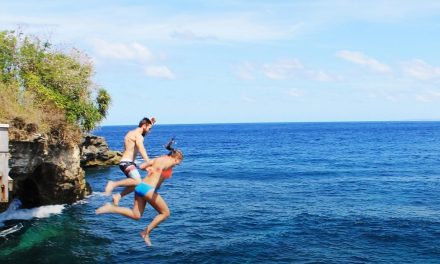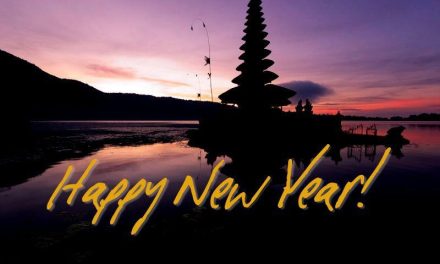When you think of diving in Bali, crystal-clear waters and vibrant coral reefs may come to mind. However, many divers often overlook the fact that the rainy season can still offer some fantastic diving opportunities. In my own experiences exploring Bali beneath the waves during the wet months, I’ve discovered that the rainy season is not only manageable but can also lead to unique and memorable underwater adventures. Let’s dive into some of Bali’s best diving hotspots during this time and how you can make the most of it!
Understanding the Rainy Season
Bali’s rainy season typically runs from November to March, with the heaviest rains usually falling in December and January. While some might shy away from diving during this period, I’ve found that the rains often lead to fewer crowds and a more intimate diving experience. Plus, the marine life is often more active, which means you might just spot that elusive mola mola or even a dolphin pod!
1. Tulamben: The Shipwreck Wonder
One of my first diving experiences in Bali was at Tulamben, home to the famous USAT Liberty Shipwreck. This site is a favorite among divers of all skill levels. What I found particularly enchanting during the rainy season was how the freshwater runoff created interesting currents, often bringing in a plethora of nutrients. This, in turn, attracted diverse marine life.
I remember diving there in January not expecting much, only to be surprised by schools of jackfish circling the wreck and colorful nudibranchs creeping along its surfaces. The visibility wasn’t as pristine as in the dry season, but the experience was just as rewarding. If you’re planning to visit during the rainy season, don’t forget a good underwater camera—those vivid colors deserve to be captured!
2. Nusa Penida: Mola Mola Madness
If you’re lucky enough to catch the right conditions, diving at Nusa Penida can be exhilarating during the rainy season. The famous Manta Point is known for its majestic manta rays, but for those daring enough, the season can also bring mola molas (sunfish) closer to the surface as they feed. I once did a dive here in February, and witnessing a massive mola glide by was nothing short of magical.
However, be prepared for fluctuating currents; one moment you might feel as though you’re swimming in a lazy lagoon, and the next, you’re being whisked away. Always check with local dive operators for the best conditions, and remember to dive with an experienced guide. Their insights can be invaluable, especially during the rainy season.
3. Padang Bai: A Hidden Gem
While often overshadowed by heavier traffic dive sites, Padang Bai offers some incredible diving during the rainy months. It’s a lesser-known area that can be a real treat. The coral reefs here tend to remain colorful and vibrant, thanks to the warm water temperatures.
I vividly recall a dive at Blue Lagoon, where we encountered a playful turtle who seemed to take a shine to our group. While larger crowds flock to more popular spots, Padang Bai allows for a relaxed diving experience where you can truly connect with nature. I would recommend getting an early start to avoid any fleeting rains that might roll in later in the day!
4. Amed: A Serene Escape
Amed offers a charming laid-back vibe and is another spot worth checking out during the rainy season. The underwater landscape is filled with slope dives, vibrant coral gardens, and, if you’re lucky, sightings of larger pelagics.
When I last visited Amed during a drizzly afternoon, I was enchanted by how the raindrops formed ripples on the surface, creating a serene backdrop for our dive. The visibility was decent, and I was delighted to see a myriad of clownfish darting around their anemones. If you find yourself in Amed, don’t skip the opportunity to explore the local sea life; it’s as if they come alive in the rain!
Practical Tips for Diving in Bali’s Rainy Season
1. Do Your Research: Always check weather forecasts and dive conditions. Some dive sites might be affected by strong currents or poor visibility.
2. Stay Flexible: Be prepared for changes in your dive plans. Rain can affect conditions, and knowing your options can help keep your diving experience enjoyable.
3. Use Local Dive Shops: Local operators know the waters best. They can provide insights about where to dive based on rainfall and current conditions.
4. Pack Smart: Waterproof bags are essential, especially if you’re transferring between dive sites. Keep your gear dry and ready to use!
5. Travel with a Buddy: Having a dive buddy is always advisable, especially during the rainy season. It’s not just safer; it makes for better storytelling later over a cup of hot coffee!
Conclusion
Bali diving hotspots during the rainy season offer a unique adventure that should not be overlooked. With fewer crowds, vibrant marine life, and opportunities to spot rare creatures, the rainy months can turn into a diver’s paradise. Whether you’re swimming through the wrecks of Tulamben or gliding alongside gentle giants in Nusa Penida, embracing the rain can lead to some of the most memorable experiences of your diving journey. So, gear up and get ready to explore the underwater wonders of Bali, no matter what the weather brings! Each dive will tell a story, and you’ll surely come home with not just memories but a heart full of adventure.






